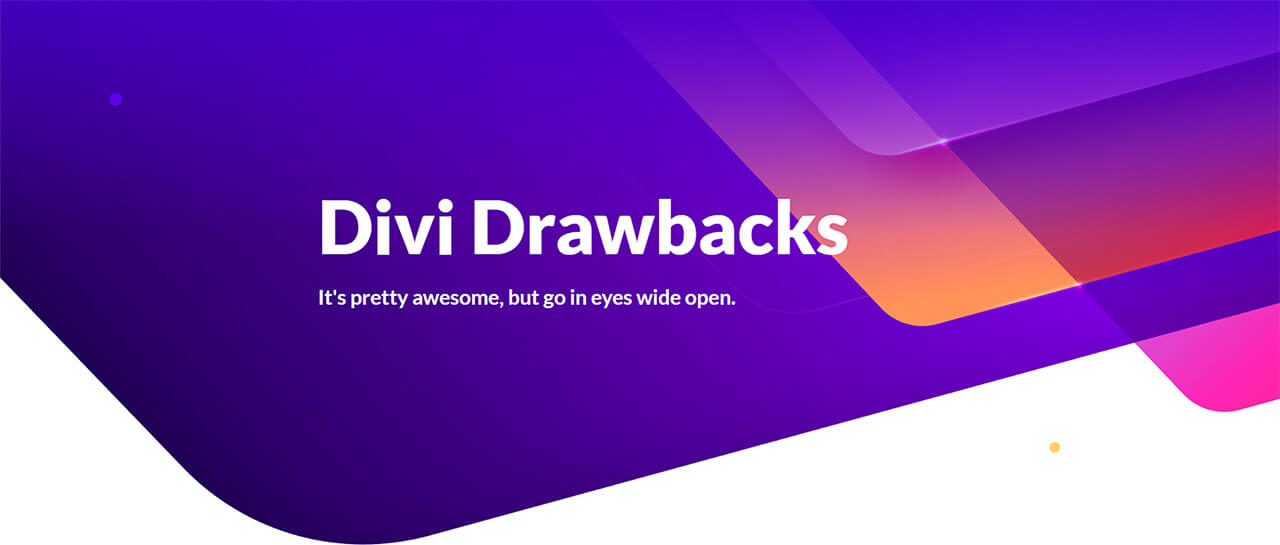Two (Big) Drawbacks to Divi
Being brutally honest, even the most popular theme in the world isn't perfect. Here are two big drawbacks to using the Divi WordPress theme.

Heralded as the most popular WordPress theme and page builder in the world, Divi by ElegantThemes IS a great theme framework. We’ve used it. We’ve abused it. We’ve kissed it and shaken our fists at it. Let’s take a moment to talk about what it does well and what drawbacks you should be aware of before jumping on the Divi bandwagon.
A Manual Affair
Divi is like the popular Visual Composer plugin plus a very simple theme. As such, Divi isn’t truly template-based, like Bootplate is, for example. You’re building layouts on a page-by-page (or post-by-post) basis. Yes, you can save these layouts to Divi’s library, and reuse/apply them to other pages and posts.
Let’s say you want to change the global color pallet for your site after a rebranding. In a traditional theme, you could make that global change to the CSS, you could change it in the theme options, or even the Customizer and in one quick swoosh, boom. Everything’s changed. Done. In Divi, these changes would be a huge pain. You’d have to change them element-by-element because Divi doesn’t use a global stylesheet. Most of it is either inline style or dynamic styling added to the page.
In this sense, Divi is a more manual affair, best suited for relatively small websites. The best use-case for Divi would be for a portfolio website, with all pages designed independently, to suit the content on each page. Contrarily, the worst use-case of Divi, would be for a very large corporate website.
Till Death Do You Part
What’s been so controversial, is the way the Divi theme creates its impressive page layouts. Technically, under-the-hood, Divi does its job; using shortcodes. As long as Divi is your active theme, these shortcodes will be replaced with your intended layout. However, should you ever decide to switch themes at some point in the future, your dear content will be soaked in a sea of lifeless shortcodes.
“You can checkout any time you’d like… But you can never leave!”
The Eagles – Hotel California (lyrics)
See what we mean?

We’re not talking “a few shortcodes here and there” – we’re talking massive shortcode pollution.
Now, you CAN use just the visual builder that comes with Divi and change the theme, but the styling will be all off, unless you’re ok with some sort of mutant hybrid. What if you’d like to stop using the Divi Page Builder plugin, for whatever reason? Yup. You’re right back here.
So Use Divi or Not?
Again, it depends on what you’re building. We’ve used it for small sites which have minimal content but need lots of pretty layouts and for portfolio-esque sites. We would never use it for something large and corporate where consistency is king and the shear size of the site would make global changes a nightmare. For sites like that, we’ll typically just build something totally custom or build on a basic theme framework, like our own Bootplate theme framework.
Maybe you bleed Divi-purple. Let us know why we couldn’t be more wrong in comments below.
Get the Email
Join 1000+ other subscribers. Only 1 digest email per month. We'll never share your address. Unsubscribe anytime. It won't hurt our feelings (much).